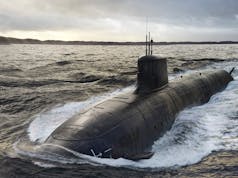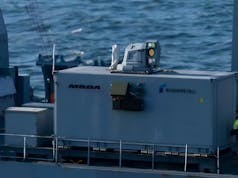After an extended refit process that more than doubled its expected timeline, HMS Vanguard, a crucial component of the UK’s Trident nuclear deterrent, has departed from Devonport dockyard.
The 150-meter-long Vanguard-class submarine underwent a comprehensive seven and a half year refit, including an unscheduled nuclear refueling, far exceeding the originally planned three and a half years.
200 million was to be spenr but the final bill is closer to 500m.
HMS Vanguard’s extended stay at Devonport raises questions about maintenance efficiency and project management within the Ministry of Defence (MoD). Originally scheduled for a shorter maintenance period, the submarine’s extended refit has put a spotlight on the MoD’s handling of critical defence assets.
The Vanguard-class submarines, each capable of carrying up to 16 Trident ballistic missiles with multiple nuclear warheads, form a cornerstone of the UK’s nuclear deterrence strategy.
With one submarine always at sea and another on high readiness, the prolonged refit of HMS Vanguard has potentially strained the operational flexibility of the fleet.
Luke Pollard, MP for Plymouth Sutton and Devonport and shadow armed forces minister, commented on the situation, stating: “It is good to see HMS Vanguard finally at sea again and I want to thank all the skilled workers at Devonport for their efforts. What we do in Plymouth is unique and world-class, but we must acknowledge the MoD’s mismanagement of this refit process. Ministers allowed this project to run over-budget and take twice as long as similar work on HMS Victorious, Vigilant and Vengeance.”
Following its departure from Devonport, HMS Vanguard will undergo a series of trials and training exercises before rejoining the UK’s nuclear deterrent force. The Royal Navy has emphasised the importance of this phase to ensure the submarine and its crew are fully prepared for operational deployment.













